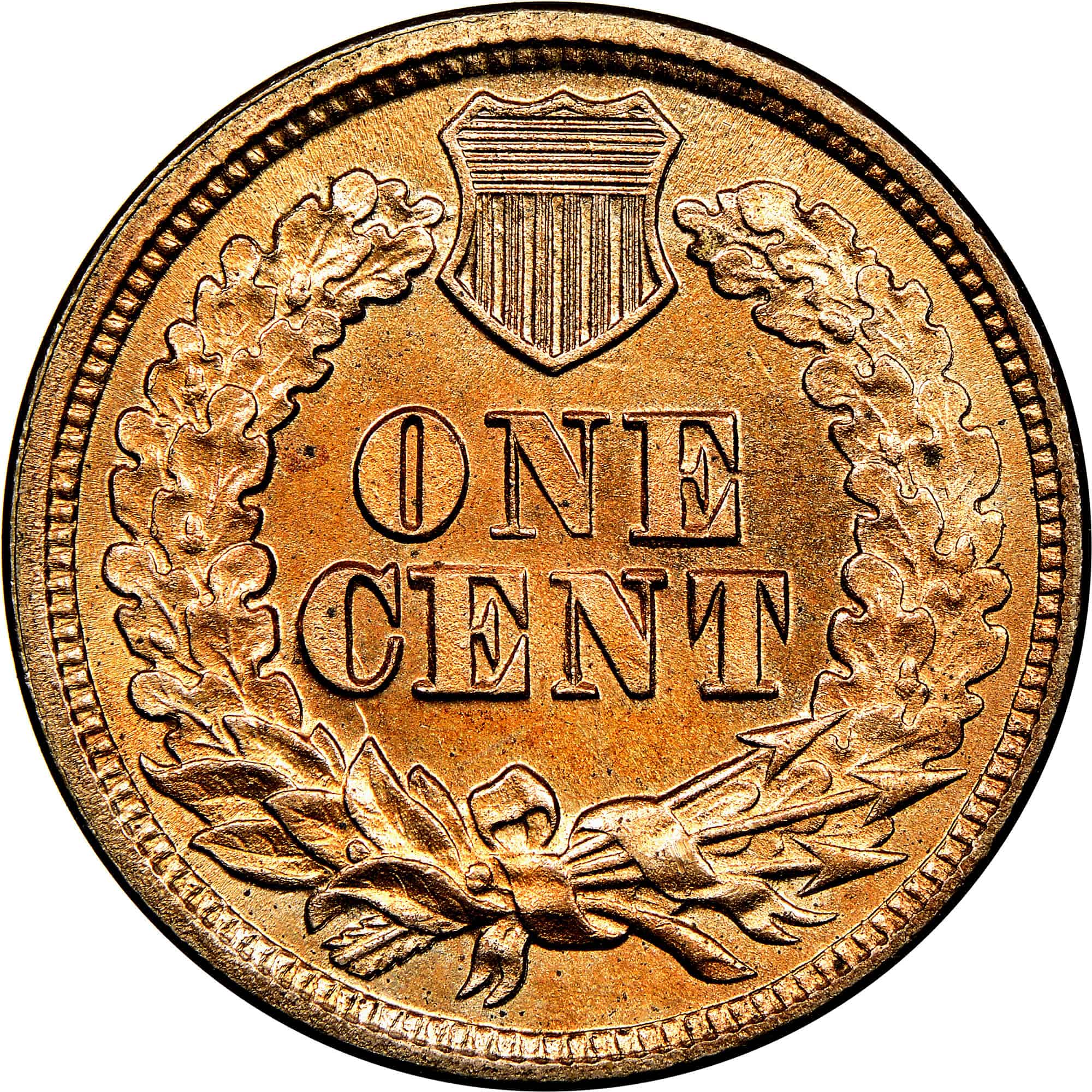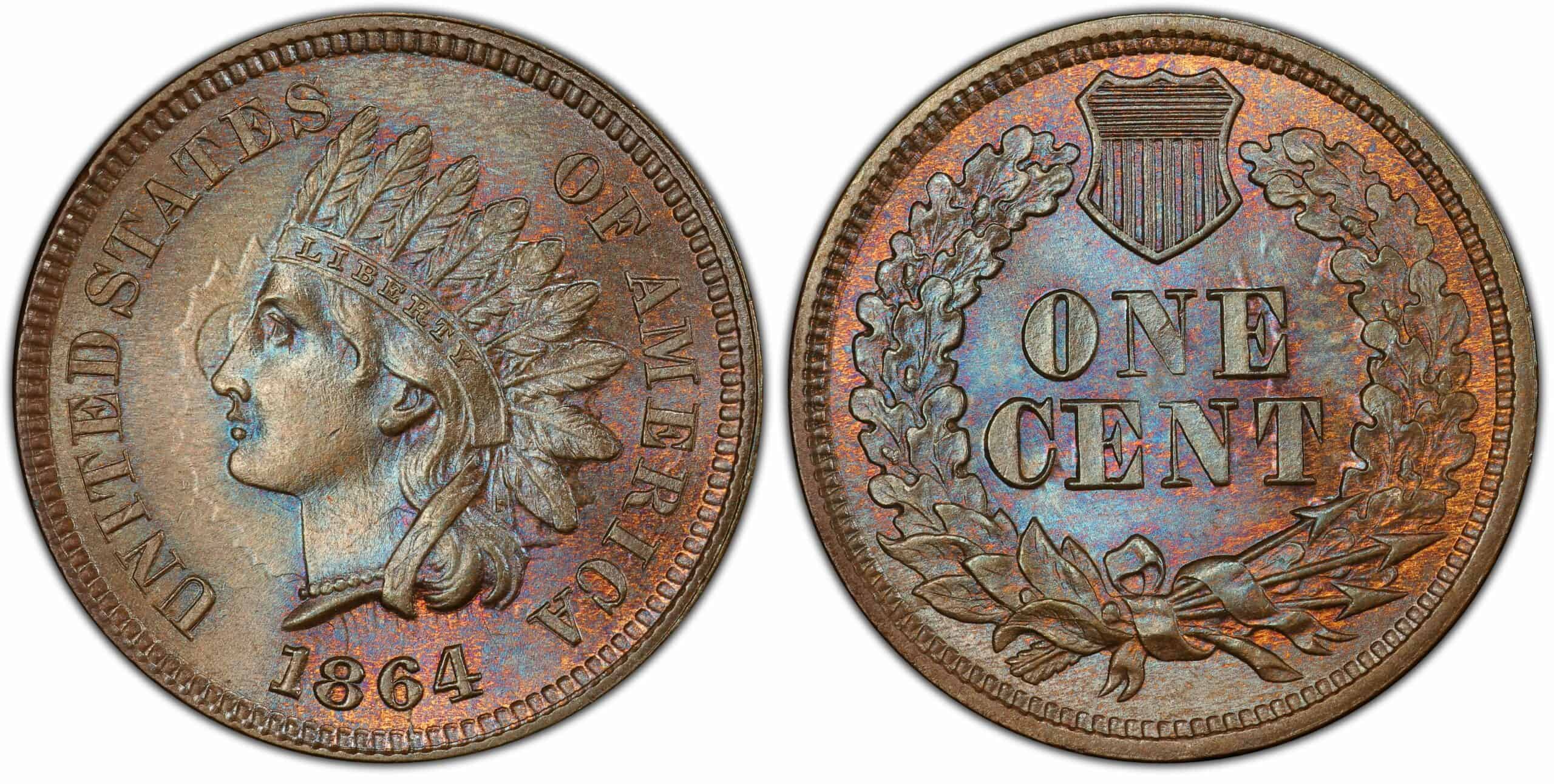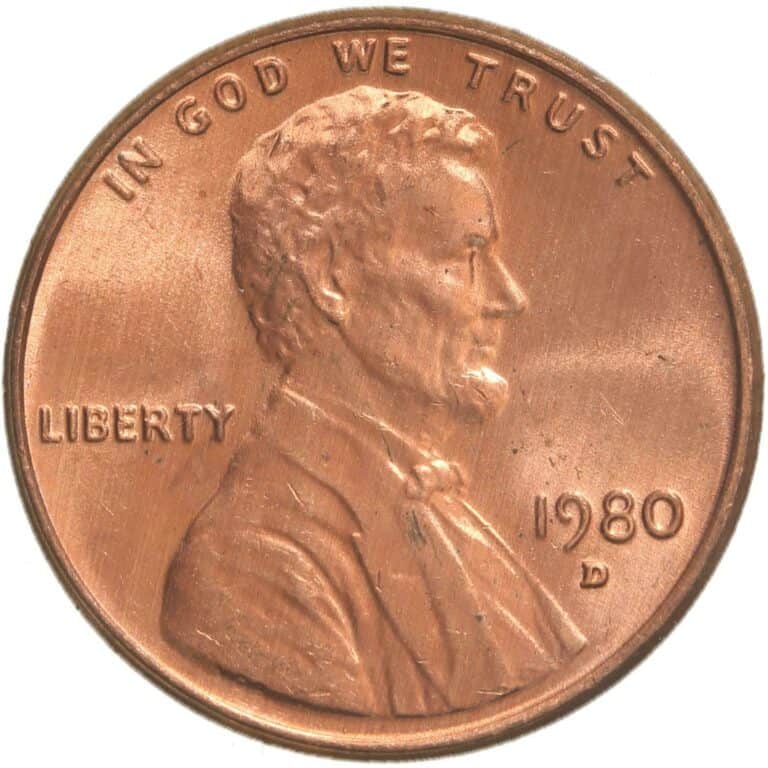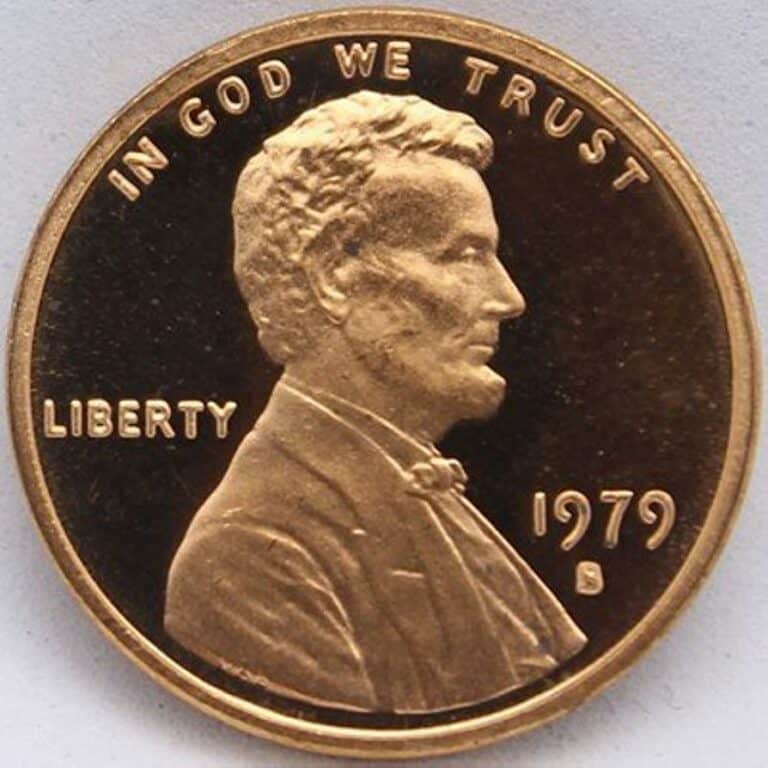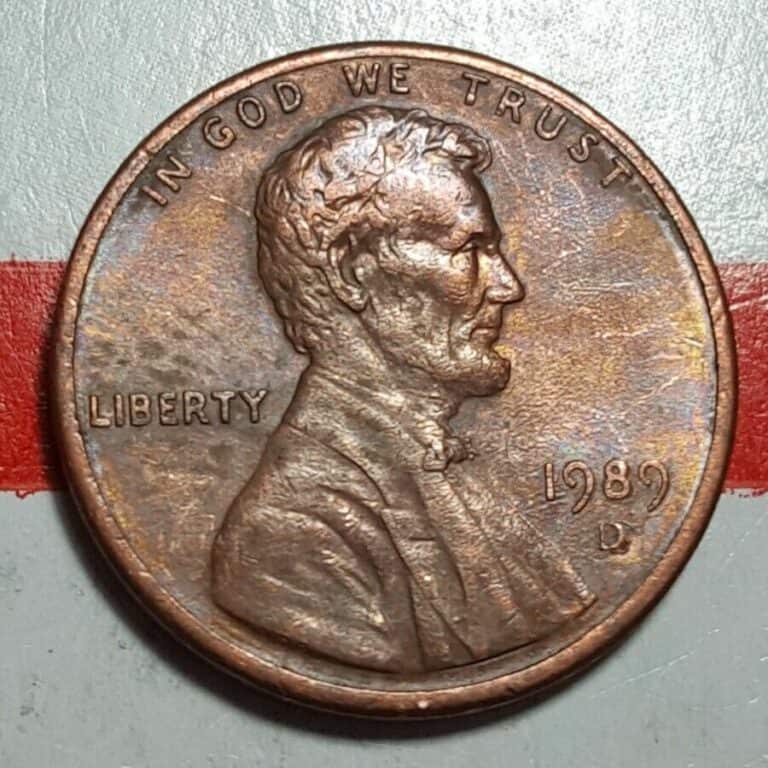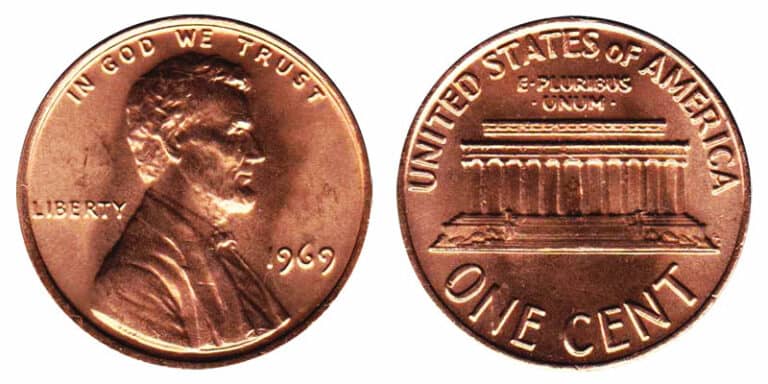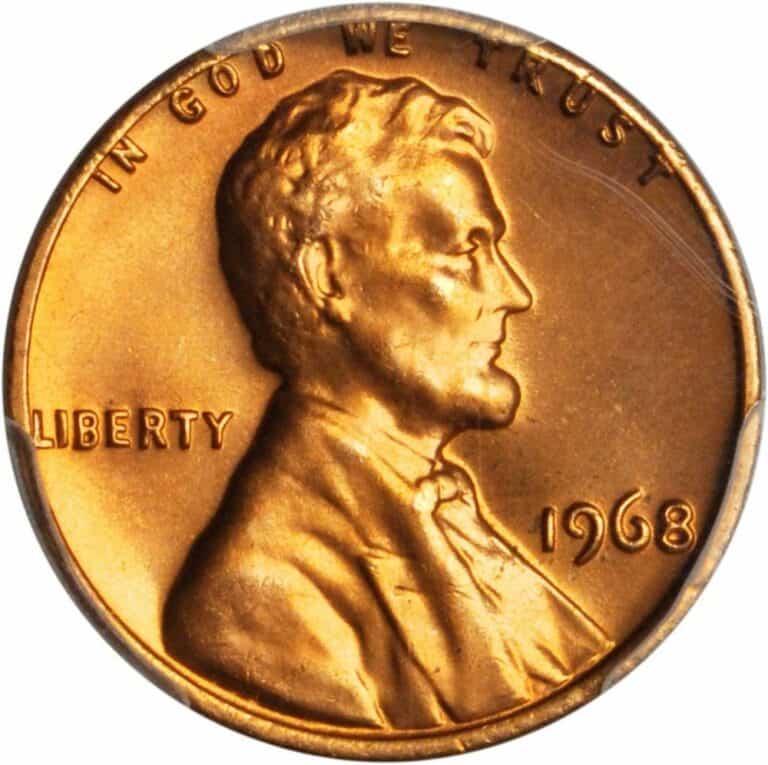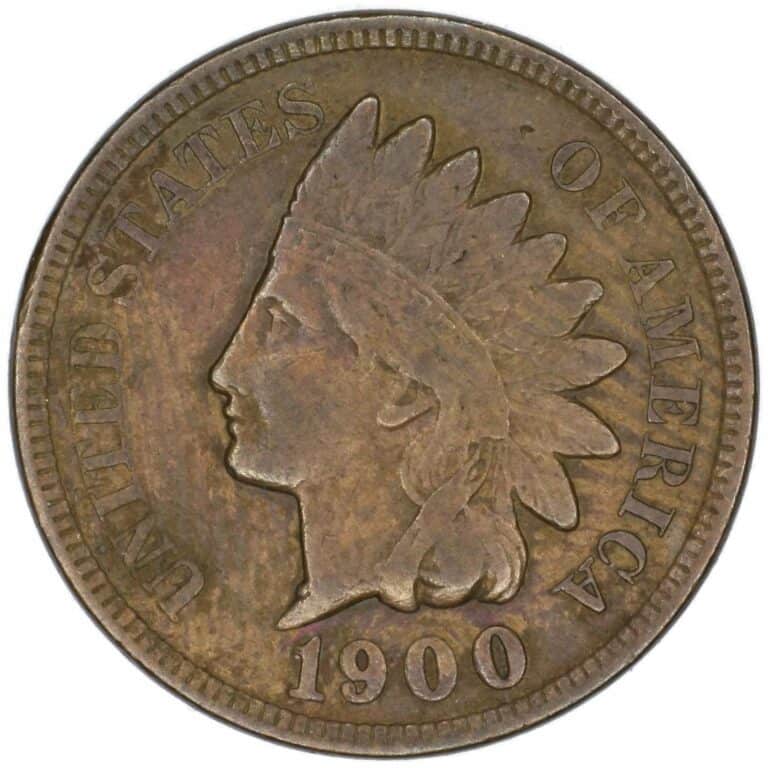1864 Indian Head Penny Value: How Much is it Worth Today?
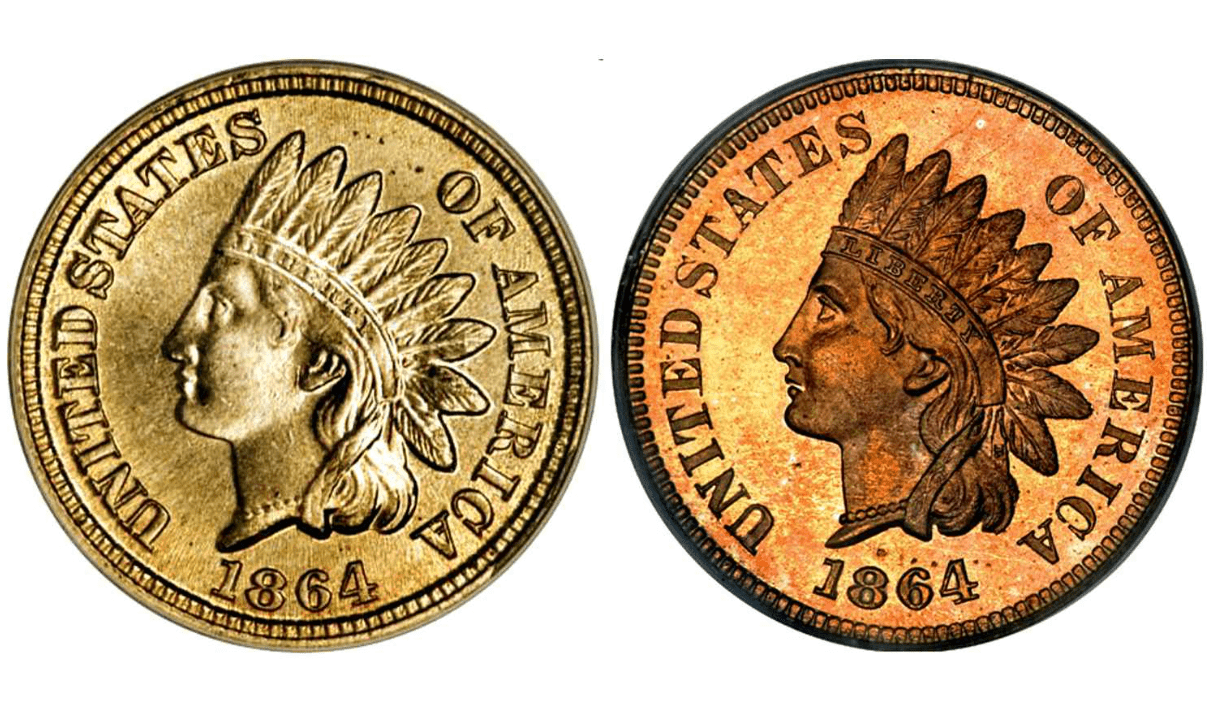
Do you have an Indian head penny dated 1864? You are likely curious whether this old coin is worth anything.
Well, the good news is that Indian head pennies are quite popular as collector’s items. These coins have a beautiful design and hold a special place in U.S. history.
Hold onto your penny because it might be worth hundreds or thousands of dollars, depending on its condition and coloration.
In this article, I explain everything you need to know about the 1864 Indian head penny value. You’ll find out the difference in value between bronze and copper-nickel pennies and rare errors that can be worth a lot.
Let’s get started!
1864 Indian Head Penny Value Chart |
||||
| Mintmark | Good | Fine | Extremely Fine | Uncirculated |
| 1864-P No Mint mark Indian Head Penny Copper-Nickel | $25 | $50 | $115 | $20,000 |
| 1864-P No Mint mark Indian Head Penny Bronze Brown | $70 | $150 | $275 | $5,250 |
| 1864-P No Mint mark Indian Head Penny Bronze Red-Brown | – | – | – | $9,350 |
| 1864-P No Mint mark Indian Head Penny Bronze Red | – | – | – | $52,500 |
| 1864-P No Mint mark Indian Head Penny Proof Copper-Nickel | – | – | – | $19,000 |
| 1864-P No Mint mark Indian Head Penny Proof Bronze Brown | – | – | – | $7,500 |
| 1864-P No Mint mark Indian Head Penny Proof Bronze Red-Brown | _ | _ | _ | $14,000 |
| 1864-P No Mint mark Indian Head Penny Proof Bronze Red | _ | _ | _ | $20,000 |
| 1864-P No Mint mark Indian Head Penny Proof Cameo | _ | _ | _ | $25,000 |
| 1864-P No Mint mark Indian Head Penny Proof Cameo | _ | _ | _ | $21,000 |
1864 Indian Head Penny Specifications
- Category: Indian cents
- Mint: Philadelphia
- Mintage-Bronze: 39,233,714
- Mintage– Copper nickel: 13,740,000
- Obverse designer: James Barton Longacre
- Reverse designer: James Barton Longacre
- Composition: Bronze: 95% Copper, 5% Tin, and Zinc
- Composition: Copper-Nickel: 88% Copper, 12% Nickel
- Fineness: 0
- ASW: 0
The Obverse of the 1864 Indian Head Penny
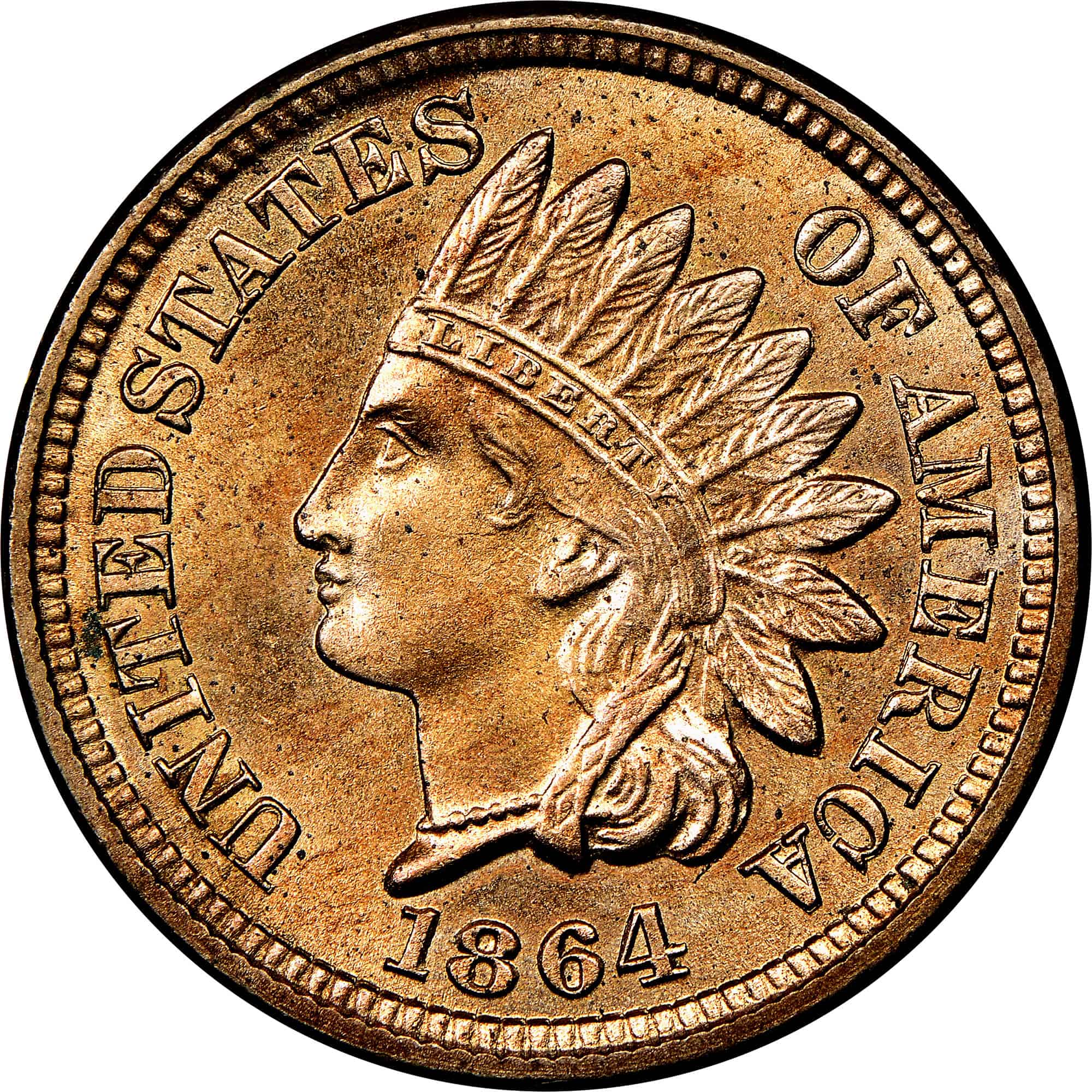
The obverse of the 1864 Indian head penny features a left-facing Lady Liberty adorned in a Native American headdress.
A ribbon with the word LIBERTY is tied around the Lady’s head, over her forehead, and tied at the back.
Legend has it that the portrait of Lady Liberty on the Indian head penny is based on coin designer James Longacre’s daughter. Although the portrait is indeed that of a Caucasian female, Longacre long disputed claims that it is based on his daughter’s image.
That aside, the obverse also features the words UNITED STATES OF AMERICA taking up the coin’s natural curvature. The date year, 1864, is etched at the bottom.
Some 1864 pennies feature a small letter L on the tip of the ribbon just behind Lady Liberty’s neck. The letter stands for Longacre, and it can significantly increase the value of your Indian cent.
The Reverse of the 1864 Indian Head Penny
Turn the coin over on the reverse, and you will see a simple yet memorable design. A small shield at the top of the coin represents readiness to defend the country. The mint introduced the shield in 1860; this feature was initially absent from Indian head cents.
Another feature the mint introduced in 1860 is the oak wreath, which replaced the laurel wreath. A bunch of arrows is tied at the bottom of the wreath.
The coin’s denomination, ONE CENT, is etched at the center, flanked by the oak wreath.
Check out the video below to learn more about how the presence of the letter L can affect the value of your 1864 Indian cent.
1864 Indian Head Penny Value and Varieties Guide
All Indian head pennies from 1864 were minted in Philadelphia. The mint struck two main varieties of these coins: the bronze and the copper-nickel cents.
The first Indian head pennies struck in 1859 were made of 88% copper and 12% nickel. This composition changed in 1864, and the mint began striking Indian cents on planchets containing 95% copper and 5% zinc and tin.
Even after the changes, the mint continued striking copper-nickel Indian and bronze cents. So, that year, the mint produced bronze and copper-nickel Indian head pennies.
In addition to the regular business strikes, the mint at Philadelphia also struck several proof coins in bronze and copper-nickel for collectors.
We’ll look at the value of regular business strikes and proof Indian head pennies struck in copper-nickel and bronze.
1864-P No Mintmark Copper-Nickel Indian Head Penny
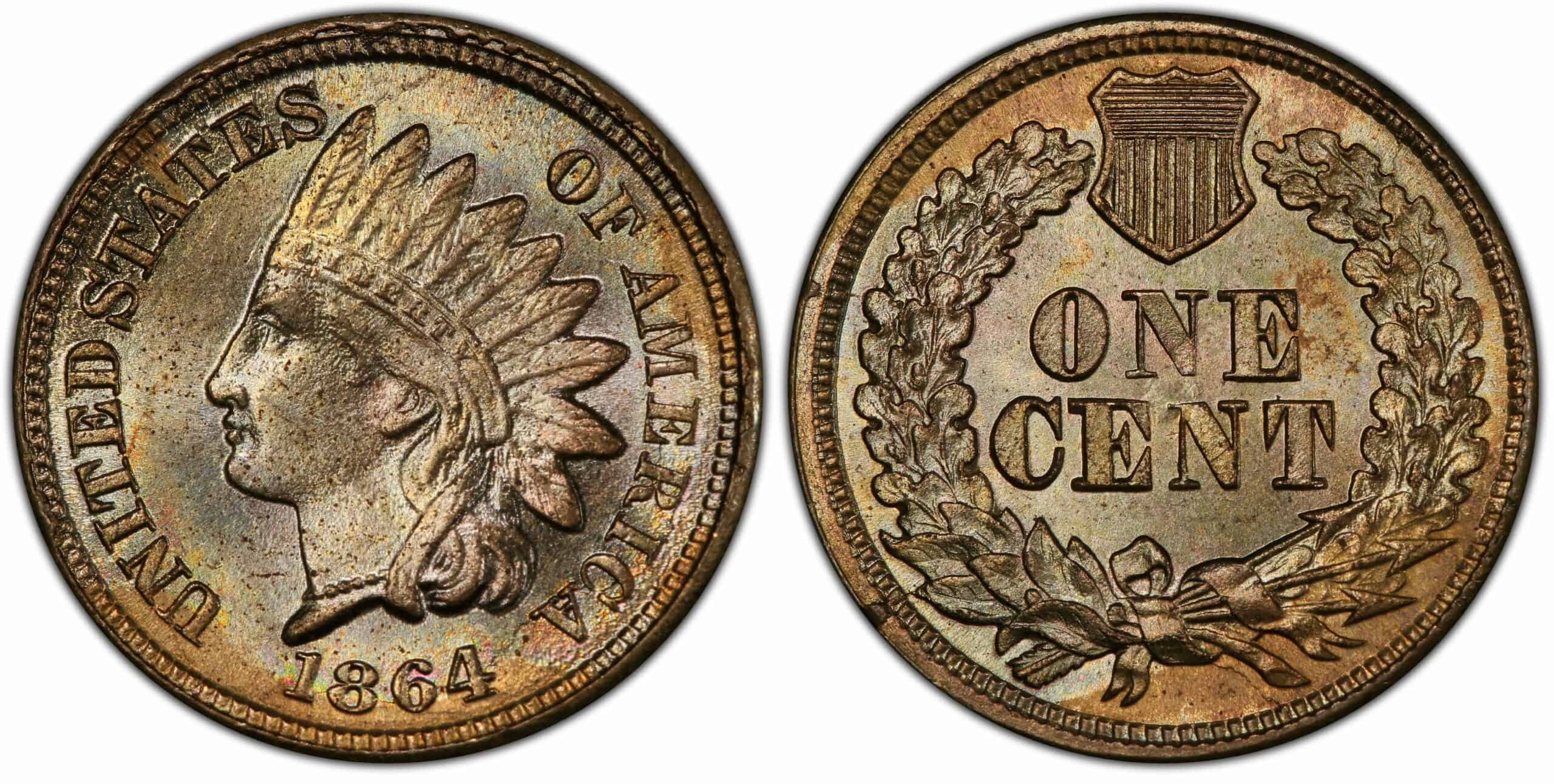
- Type: Indian cents
- Edge: Plain
- Mintmark: None
- Place of minting: Philadelphia
- Year of minting: 1864
- Face value: $0.01 (one cent)
- Price: $17.50 to $13,800 (or more)
- Quantity produced: 13,740,000
- Designer: James Barton Longacre
- Composition: 88% copper, 12% nickel
- Mass: 3.11 grams
- Diameter: 19.00 millimeters
- The Philadelphia mint struck close to 14 million copper-nickel Indian head cents a few months before Congress passed a law to replace copper-nickel cents with bronze cents. Most of these coins were hoarded upon release but were later returned into circulation.
The value of nickels will depend on their condition. Most produced in 1864 are of inferior quality with weak strikes and a dull surface.
The lowest graded copper-nickel 1864 Indian cent is worth about $17.50, but the price increases for one graded AU58 (About Uncirculated), which can fetch up to $250.
In uncirculated condition, a copper-nickel Indian head penny from 1864 can fetch up to $20,000. According to the Professional Coin Grading Service (PGCS), the finest known example was sold in 2006 for $13, 800 but prices have since gone up to as much as $20,000.
As the second lowest mintage of copper-nickel Indian head pennies, 1864 cents are generally rarer than 1860, 1862, and 1863 mintages. Therefore, the 1864 copper-nickel Indian head penny is slightly more expensive.
Copper-nickel Indian head cents from 1864 graded MS65 and above are scarce, with only 10 to 15 known examples. So far, the PCGS has graded only one example of an 1864 copper-nickel Indian head-cent at MS70.
1864-P No Mintmark Bronze Indian Head Penny
- Type: Indian cents
- Edge: Plain
- Mintmark: None
- Place of minting: Philadelphia
- Year of minting: 1864
- Face value: $0.01 (one cent)
- Price: $25 to $35,000 (or more)
- Quantity produced: 39,233,714
- Designer: James Barton Longacre
- Composition: 95% Copper, 5% Tin, and Zinc
- Mass: 3.11 grams
- Diameter: 19.00 millimeters
The mint began striking bronze cents following approval by Congress. These new coins were quite popular, and Longacre, who wanted to be recognized for his exceptional design work, included the initial L on the coin’s obverse. The initial is very small and rotated upright clockwise, so most collectors do not notice it.
Only a few Indian head pennies from 1864 bear this initial, making these coins rare and highly sought after by collectors. Another way to identify the L bronze cents is by Lady Liberty’s pointy bust.
Gem quality examples of 1864 bronze L pennies are rare, but a few examples exist in mint state. The color and condition impact the value of bronze 1864 Indian head pennies.
In circulated condition, the lowest graded brown cent is worth $10, while one graded About Uncirculated (AU53) can fetch as much as $125. In uncirculated condition, expect between $500 and $1200 and up to $525 for rare gem quality examples.
Red-Brown cents are rare in circulated condition. Values start at $215 for mint state coins graded MS61, but the prices can shoot to as much as $5,000 or more for coins graded MS66.
The finest known example was sold in 1999 for $5,550, but prices have since risen, and a mint state 1864 red-brown cent can fetch as much as $9,350.
Red Indian head cents are the most desirable for collectors. Values start at $275 for uncirculated mint state examples graded MS62, while one graded MS65 can bring in up to $1,700. Gem-quality pennies graded 67 and above are worth as much as $35,000. A recent example sold in 2021 was graded MS67 and fetched $29,795.
1864-P No Mintmark Bronze Proof Indian Head Penny
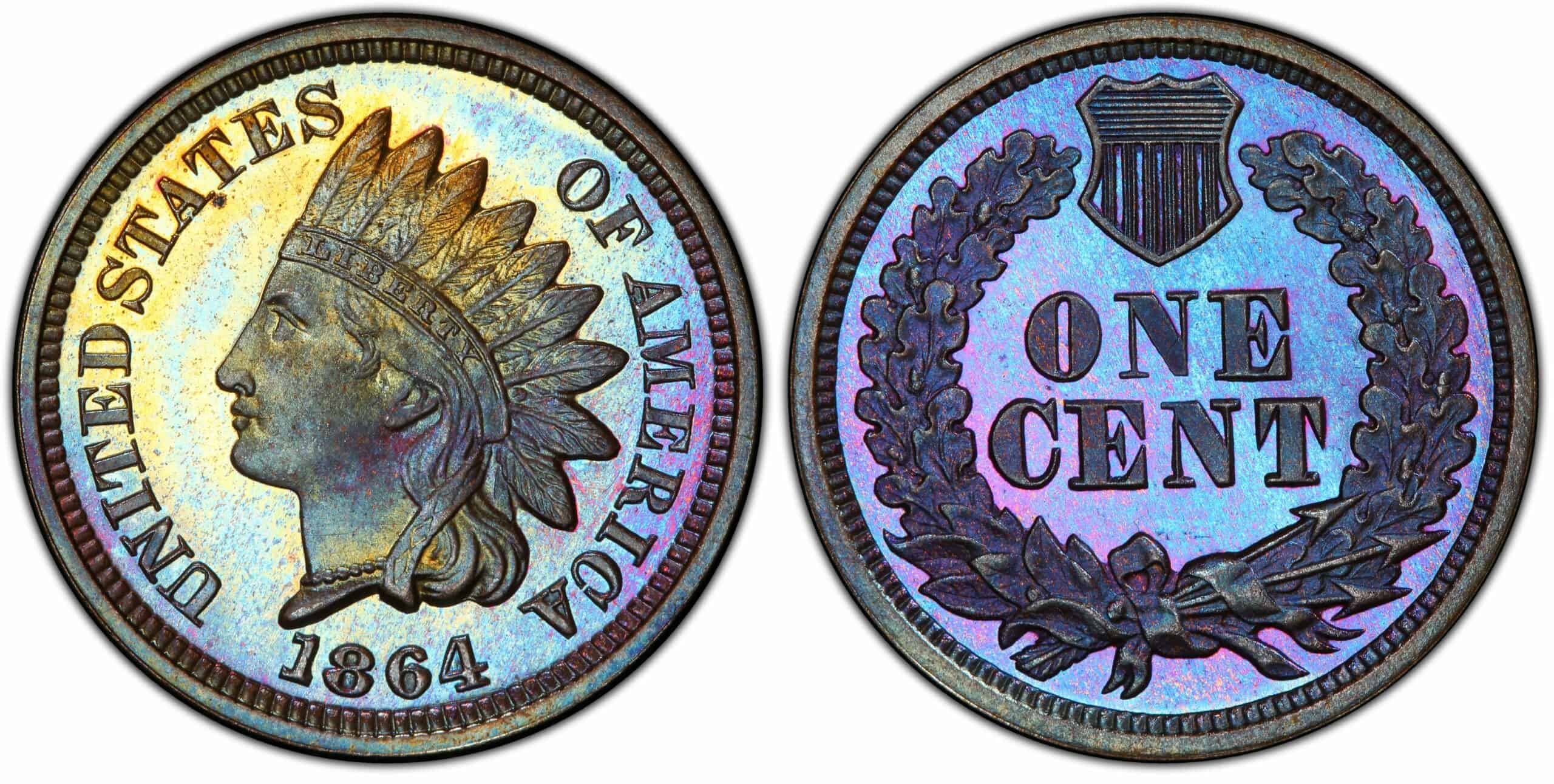
- Type: Indian cents
- Edge: Plain
- Mintmark: None
- Place of minting: Philadelphia
- Year of minting: 1864
- Face value: $0.01 (one cent)
- Price: $425 to $20,000 (or more)
- Quantity produced: 150
- Designer: James Barton Longacre
- Composition: 95% Copper, 5% Tin, and Zinc
- Mass: 3.11 grams
- Diameter: 19.00 millimeters
Special dies are used to make a high-quality variety of coins known as proof coins. These coins are made for collectors and hobbyists. They are aesthetically appealing and can be quite pricey compared to their business strike counterparts.
Only 150 bronze proofs were struck in 1864, making these coins rare but valuable. Prices start at $425 for a brown-proof Indian cent and can go as high as $7,000 for one graded PR67.
Red-brown proof coins are more expensive, starting at $1,500 for a penny graded PR63 and $14,000 for a PR67 cent.
If you want a red proof Indian head penny dated 1864, expect values to start at $2,150 for a penny graded PF64. For one graded PR66, you will part with as much as $20,000.
Aside from brown, red-brown, and red Indian proof cents, there are also those categorized as cameo and deep cameo. These coins give off a sparkling luster, creating an attractive contrast between the design elements, such as the lettering, wreath, digits, and surface.
Values for an 1864 Indian head penny cameo start from $5,000 at grade PR64 to $25,000 for coins graded PF66. The finest known example was auctioned for $28,750.
According to the PCGS, there is only one example of a deep cameo 1864 Indian head penny, and it is worth $21,000.
1864-P No Mintmark Copper-Nickel Proof Indian Head Penny
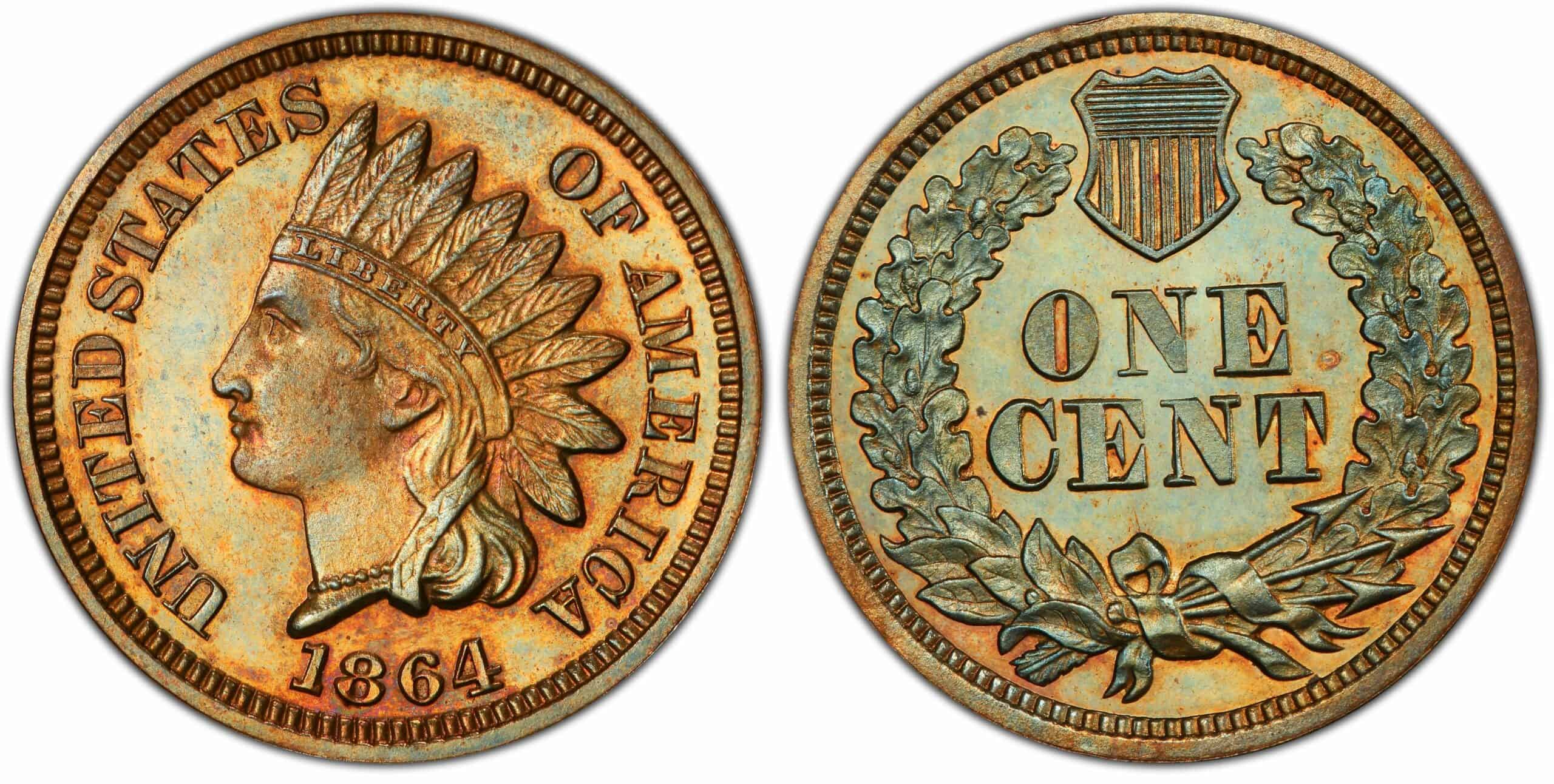
- Type: Indian cents
- Edge: Plain
- Mintmark: None
- Place of minting: Philadelphia
- Year of minting: 1864
- Face value: $0.01 (one cent)
- Price: $975 to $19,000 (or more)
- Quantity produced: 370
- Designer: James Barton Longacre
- Composition: 88% copper, 12% nickel
- Mass: 3.11 grams
- Diameter: 19.00 millimeters
- The mint struck a total of 370 copper-nickel-proof Indian cents in 1864. The low mintage makes this proof coin attractive to collectors.
Values start at $975 for a copper-nickel proof graded PF62, with the price shooting to $19,000 for coins graded PF67, of which there are only three existing examples currently.
1864 Indian Head Penny Grading
Several factors come into play when grading 1864 Indian head pennies. First, you must consider its metal composition, whether it is a bronze or copper-nickel coin.
The value of bronze Indian head pennies varies drastically depending on the coloration. Brown cents are generally inexpensive and not as attractive to collectors.
Red-brown ones are slightly more valuable, especially if they are in good condition, while red Indian cents are the most desirable, with gem-quality examples costing thousands of dollars.
1864 Indian Head Penny Error Lists
1864 Indian Head Penny Re-Punched Date Error
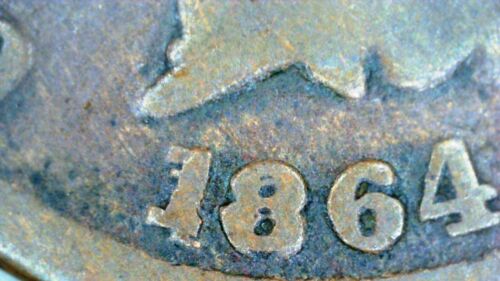
The repunched date error is quite common among Indian head pennies, and the 1864 cent is no exception. This error occurs when the date is punched two or more times, resulting in some doubling on the digits though you’d need a coin loupe to notice the doubling.
One such example is an 1864 copper-nickel Indian head penny in which the 6 and 4 are repunched and show some doubling.
This example, graded by the PCGS, also includes the L letter on Lady Liberty’s ribbon, making it even more desirable. The coin, graded Extremely Fine 45 (XF45), was auctioned in 2018 for $58.
1864 Indian Head Penny Polished Die Error
A polished die error happens when the marks on a polished die are transferred to the planchet. In the case of the 1864 copper nickel Indian cent, the vertical die marks appear on Liberty’s ear.
So valuable is a polished die error in this date that prices start at $100 for a poor-quality coin and increase to $3,600 for a mint state coin graded MS66.
1864 Rotated Reverse Indian Head Penny Error
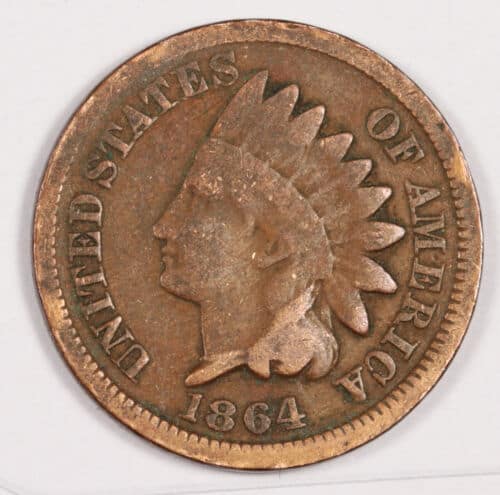
Occasionally, you will come across an Indian cent with a normal obverse design but the reverse is rotated, so instead of being upright, the design is inverted.
One such example was sold on eBay for $72. The coin also featured a relatively visible L on Lady Liberty’s headdress ribbon, making it more desirable to collectors.
1864 Indian Head Penny FAQ
Where is the L on an 1864 Indian Head Penny?
The L, which stands for Longacre, is positioned right behind Lady Liberty’s neck at the tip of her headdress ribbon. Not all 1864 Indian head pennies have this desirable initial. In pennies that have the initial, it can be quite difficult to spot with your naked eyes; a coin loupe will come in handy to help you check for such details.
What is the difference in a 1864 Indian Head Penny?
The metal composition is the main difference between the two varieties of 1864 Indian head cents. That year, the mint struck the usual copper-nickel coins and the new replacement bronze coins. The copper-nickel coins are typically heavier in weight but have a lighter luster than their bronze counterpart. This difference in appearance between the two coins is the most significant.
What is the most valuable Indian Head Penny?
The 1877 Indian head penny is the most valuable in the series. Only an estimated 877,000 pieces were struck that year, the second lowest mintage after the 1909-S Indian head cent.
Even though the 1909-S cent had the lowest mintage in the series, there are more examples of these coins than those dated 1877. This can be attributed to hobbyists collecting and hoarding more coins in 1909 than in 1877.
Even poor-quality 1877 coins are worth a lot, with values starting at $450 for a grade 1 coin. The finest example sold for $71,300.
